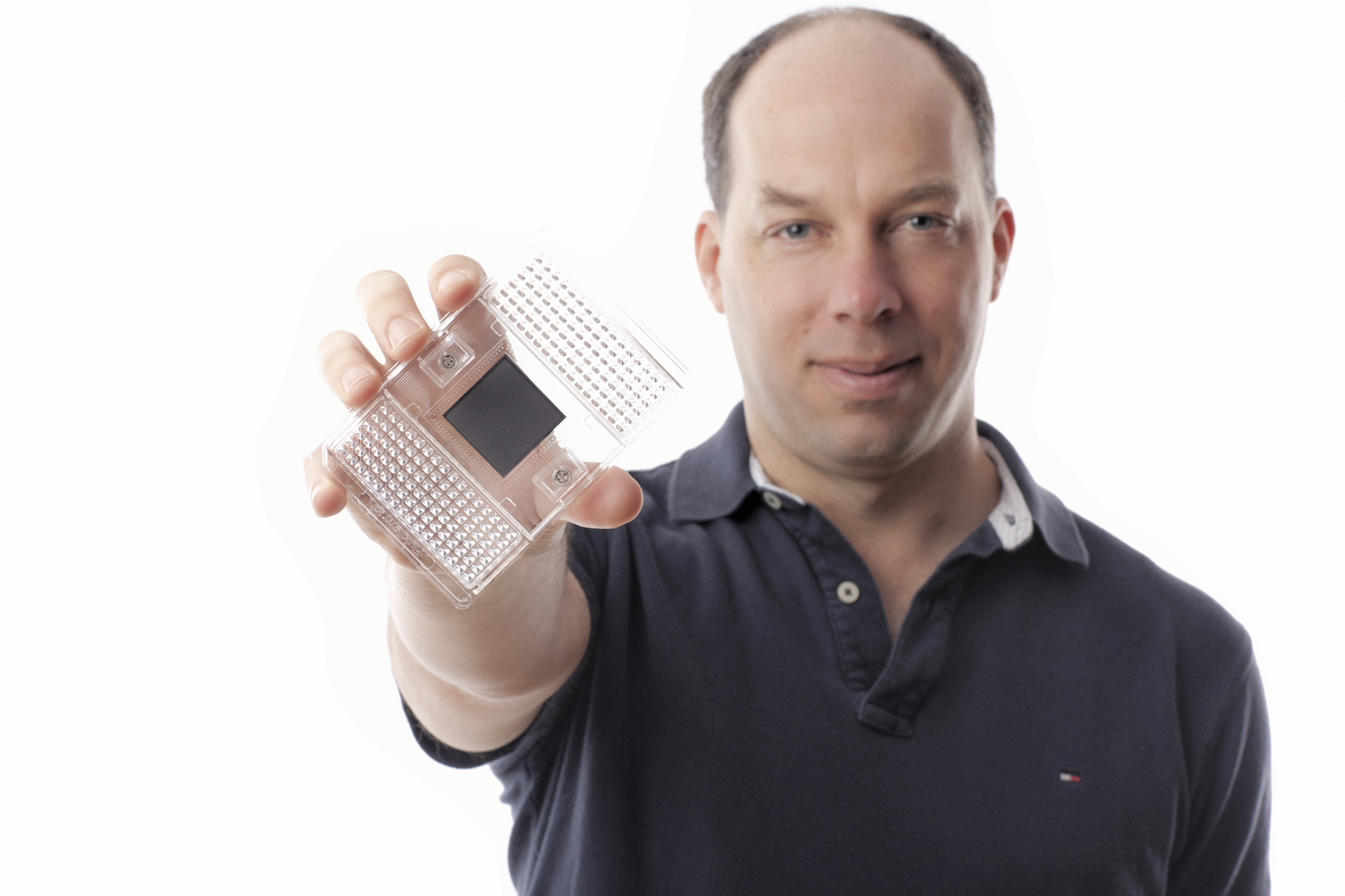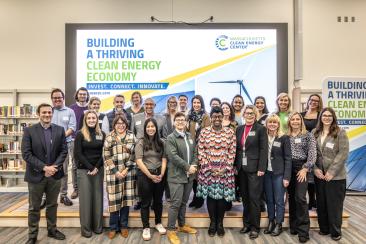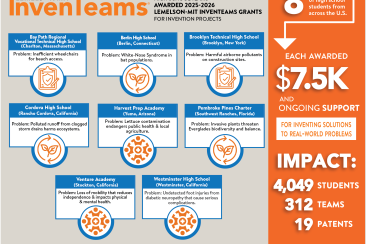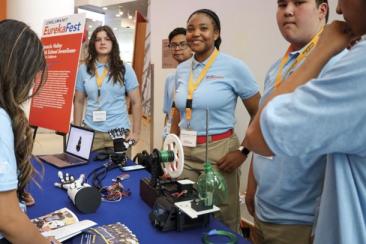Dr. Stephen Quake Honored with $500,000 Lemelson-MIT Prize

Quake recognized for biomedical discoveries and inventions in human health.
CAMBRIDGE, Mass. (June 5, 2012) – Dr. Stephen Quake, one of the world’s most prolific inventors, was announced today as recipient of the 2012 $500,000 Lemelson-MIT Prize. An adventurer at heart, Quake relishes in the adrenaline that comes from mountain biking and ski mountaineering. It is that same rush he gets from exploring the unknown that drives him to consistently push scientific limits. Quake is being recognized for his revolutionary work in drug discovery, genome analysis and personalized medicine. He will accept the prestigious award and present his accomplishments at the Massachusetts Institute of Technology during the Lemelson-MIT Program’s sixth-annual EurekaFest, a multi-day celebration of the inventive spirit, June 20 – 23.
Raised in an entrepreneurial household with a father who worked in the computer industry, Quake was captivated by technology and its infinite applications at an early age. Quake found academic success in his high school science and math courses, and went on to earn degrees in physics and mathematics from Stanford University and Oxford University. Today, the professor of Bioengineering and Applied Physics at Stanford and investigator at the Howard Hughes Medical Institute has more than 80 patents and four companies to his name.
“Steve is a scientific pioneer with a compelling vision of future possibilities,” said Gajus Worthington, president and CEO of Fluidigm Corporation, a company he co-founded with Quake. “He translates discoveries into inventions leading to new companies that are making significant advancements in human health.”
A Biological Equivalent to the Integrated Circuit
Quake realized he could apply the technological principles of the integrated circuit to biology and invented microfluidic large scale integration (LSI). Inspired by the transistors and wires found on a computer microchip, Quake developed a chip with miniature pumps, pipes, chambers and most importantly valves. The technology, which incorporates and miniaturizes complex fluid-handling steps while maintaining reliability, has paved the way for large-scale automation of biology.
Microfluidic LSI has several applications critical to human health. One application improves techniques of protein crystal growth, a crucial step to determine protein structure, and enables the manipulation of protein growth in a way that is not possible at the macro-scale. Using the chip to screen protein crystal growth conditions, Quake's devices were used to solve numerous structures – notably for proteins from the Ebola virus and the H5N1 Influenza virus.
The technology also delivers important economies of scale, as the tens-of-thousands of valves per microchip allow it to perform almost 10,000 independent measurements simultaneously. Pharmaceutical companies and research organizations are leveraging this application for studying cancer gene expression at the single-cell level, among other uses. Quake co-founded Fluidigm in 1999 to commercialize the microfluidic LSI technology. The company now employs more than 250 individuals and serves hundreds of customers in the pharmaceutical and life sciences industries. Recently, Quake co-founded Quanticel Pharmaceuticals to apply these approaches to cancer drug discovery.
Applying Genome Sequencing to Prenatal Diagnostics and Immune System Testing
Quake is also a pioneer of genome sequencing. He demonstrated the first single molecule sequencing, which was commercialized by Helicos BioSciences, and used their instrument to sequence his own genome. Quake also developed a method that forms the basis for the first ever non-invasive prenatal test for Down syndrome and other chromosomal abnormalities. Quake’s pioneering method involves drawing a small amount of blood from the mother’s arm and sequencing fragments of fetal DNA present in the sample. The test, which was commercially launched earlier this year by Verinata Health, is designed to reduce the anxiety associated with today’s multi-step process, the unacceptable false positive rates as well as the risk associated with current invasive procedures such as amniocentesis.
Quake’s daughter's food allergy and his expertise in genome sequencing led him to invent an improved method for measuring the immune system. Quake became the first person to apply high throughput sequencing to analyze an individual’s complete immune system. The method is being used to characterize immunity in a variety of clinically important ways. Quake’s ongoing research is focused on the effects of vaccination and autoimmune disease on the immune system. In 2010, Quake co-founded ImmuMetrix to develop commercial applications of his research.
“We are thrilled to honor Steve Quake, whose groundbreaking work in the field of molecular measurement has created new devices and technologies that will contribute to improving health,” said Dorothy Lemelson, chair of The Lemelson Foundation, a private philanthropy that funds the Lemelson-MIT Program. “Stephen has also been a pioneer in inventing new tools that will allow others to engage in scientific discovery and the prototyping of new biomedical devices quicker and easier -- paving the way for even more breakthrough ideas.”
Instilling a Passion for Discovery in Youth
Quake continues to push scientific and technological boundaries and encourages his students to do the same. He has developed several college-level lab courses to help students develop a stronger knowledge of science. One course helps students build and test complex scientific instruments from scratch; another ensures that all first-year bioengineering students at Stanford learn molecular biology at the bench. Quake also developed a course in microfluidics at Stanford, which he teaches as a condensed summer school course for the larger scientific community.
Recognizing the importance of early hands-on learning, Quake launched the “Inventor’s Workshop” for San Francisco-area high school students. The program teaches kids how to become inventors, helps them express their creativity in solving real-world problems by using their minds and hands to create new devices. In a recent visit to his lab at Stanford, the students learned about three-dimensional solid object printing.
“At the Lemelson-MIT Program we are committed to honoring inventors who are both advancing science and technology and paying it forward to future generations through education,” said Joshua Schuler, executive director of the Lemelson-MIT Program. “Stephen Quake is inspiring youth to attack the problems of tomorrow through invention.”





